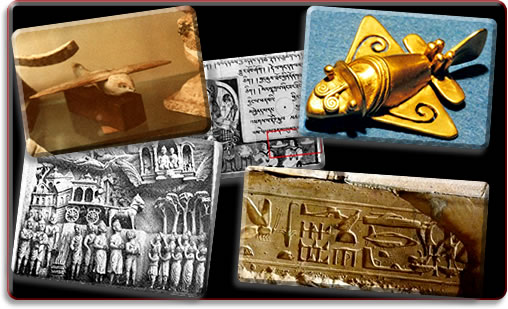Adventure, Ancient Flying Machines, Inspiration, Mystery, Technology
Ancient Flying Machines
Ancient Flying Machines
Continuing with various strange and mysterious incidences that have influenced my writing, today I’m investigating the multiple accounts of flying machines throughout the world. You might be wondering, with airplanes all around us, transforming the way we travel, how could looking at aircraft give inspiration for science fiction writing? The answer might seem stranger than science fiction. Follow along as we investigate airplanes and flying machines from our ancient past.
Almost everyone is familiar with the Wright Brothers. Orville and Wilbur Wright were avid aviation pioneers who are credited with making the first, controlled, sustained, heavier-than-air human powered flight on December 17th, 1903 in Kitty Hawk, North Carolina. Could their discoveries and successes been merely a rediscovering of technologies that the ancients knew about long before we did? Is there any evidence to suggest that early humans developed the technologies needed to fly? Amazingly, there is more evidence to suggest that the ancients of the past knew more than we give them credit for. From paintings, to written accounts, to models of planes, the past is ripe with evidence that suggested that early civilization had at least a partial knowledge of flight.
Ancient Egypt is a place teeming with mystery and intrigue. The pyramids conjure up images of mummies and curses, obsession with the after-life and cults of the dead. Beneath the sands are thousands of years of world history that took place before Jesus Christ even walked the Earth. But the sands of Egypt conceal more than just the mummified Pharaoh’s bodies.
During an excavation of a tomb at Saqquara, Egypt, a very particular object was found. The dig, conducted in 1898, discovered a six-inch long wooden object that dated back to around 200 BCE. The object had a fuselage, seven-inch wingspan that curved downward with a fixed rudder and a tail. Since it was 1898, the object was labeled as a model of an unknown bird and was stored away in the Cairo museum.
Many years later the object was rediscovered by Dr. Khalil Messiha, who is an authority on ancient models. According to Messiha, and many other scientists who’ve investigated the object have determined that the dimensions are very aerodynamic. The wings can create lift like a modern pusher-glider that require very little power to remain airborne. The wing design is similar to the design used on the supersonic Concorde aircraft. How could the ancient Egyptians have built a model that so closely mimics our modern-day aircraft?
Skeptics are very quick to point out that it was labeled as a bird and that the Egyptians and their religions used birds and bird imagery so it’s not unlikely that they created a model to represent a bird. The problem comes in that no bird every found is anything like this model. The wings are mounted wrong, in a position that wouldn’t be practical for birds to fly with. The wings dimensions don’t even come close to any birds that known to us.
What’s even more interesting about this model, scientists have made larger models of this model, keeping all the dimensions in exact proportion to the original model. They’ve found that the larger model behaves exactly like modern gliders. It can maintain flight for long periods of time and easily ride on wind currents. Could this little model, originally written off as a toy or religious item, actually have been a scale model for a plane in ancient Egypt?
Still, skeptics point to the fact that we’ve never found anything resembling an actual aircraft in either the tombs or Egypt or in any of the ancient city excavations. One would have to speculate that if they had a model of a plane, they should have a real plane. If it was just a single model then those accounts would be correct but there is other evidence in Egypt that points to the conclusion that the ancient Egyptians knew something about flight.
Dr. Ruth Hover, while investigating the temple of Abydos, Egypt, discovered some very interesting carvings on the walls. The carvings, embossed on the stone walls, depict what clearly look like aircraft, some of them even modern looking aircraft and one that bears a striking resemblance to a helicopter. Is it possible that a Pharaoh of Egypt had in their possession a flying machine? If so, where did they develop that technology from and why haven’t we found any parts or pieces of a flying machine? Only more excavating with open minds into ancient Egypt will truly answer the mystery of the Saqquara and Abydos flying machines.
Egypt isn’t the only place that has given us glimpses of what could be classified as a flying machine. In Central America, along the coastal waters of South America, an amazing discovery was found. At first glance, it looked like a little metal trinket of a bug or possibly a butterfly but upon closer examination, you’d guess that it was a space shuttle. The trinket, which, like the Saqquara artifact, resembles no known bug or animal, has a distinctly mechanical shape. You can clearly see its delta shaped wings, stabilizer fins, and a rudder. The trinket even has what looks like a cockpit and pilot’s seat in the proper position. Could this trinket be a model of a real machine that was in Central America while Europe was in the depths of the Dark Ages?
You cannot have a discussion of ancient aircraft without speaking of the Vimana from India. Written about by Maharishi Bharadwaja in the 4th century BCE, the Vimana seem to be some form of aircraft that are piloted by humans. Not only that, the descriptions in Bharadwaja and other’s manuscripts contain detailed instructions on the operation and care of the Vimana. Some of the features of the Vimana are the ability to become invisible to enemies or allowing the Vimana to have the appearance of a cloud, to the ability to destroy everything as in a cataclysm.
Much speculation and debate has gone into the writings of Bharadwaja and what it means. Some content that he would enter a drug-induced trance state and dictate his writing, implying that the Vimana were a drug induced fantasy, while others contend that his writing, and the writing of others, were first-hand accounts of what they’d seen in the air. Were these flying machines some kind of religious symbolism or was it ancient technology that civilization didn’t rediscover until recently?
Whether you believe the ancients had some form of flying machine or not isn’t the point. The ancients were far more technologically advanced than we give them credit for. Every year new discoveries are coming out that show the ancients had a better grasp on the world around them and the technologies they used than we could ever imagine. As a writer, it’s fascinating to read about theory into the advanced technologies that ancient cultures had. But who knows, maybe airplanes aren’t as modern as we like to think them to be.
To see how ancient technology and aircraft have influenced my writing, head over to www.leifericksonwriting.com and buy my books today.
Dutt, Manatha Nath (translator), Ramayana, Elysium Press, Calcutta, 1892 and New York, 1910.
Flights of fancy? (Part X of XII)”. The Week. 2001-06-24. Archived from the original on 2012-03-31. Retrieved 2015-09-15.
Larry Orcutt (2001). “Model Airplane?”. Catchpenny Mysteries of Ancient Egypt. Retrieved 2015-09-15.
Messiha, Khalil; et al. (1991). “Aeronautics: African Experimental Aeronautics: A 2000-Year Old Model Glider”. In Ivan van Sertima. Blacks in Science: Ancient and Modern. Journal of African Civilizations. vol. 5, no. 1-2. New Brunswick: Transaction Books. pp. 92–99. ISBN 0-87855-941-8. Retrieved 2015-09-15.



























Leave a reply
You must be logged in to post a comment.